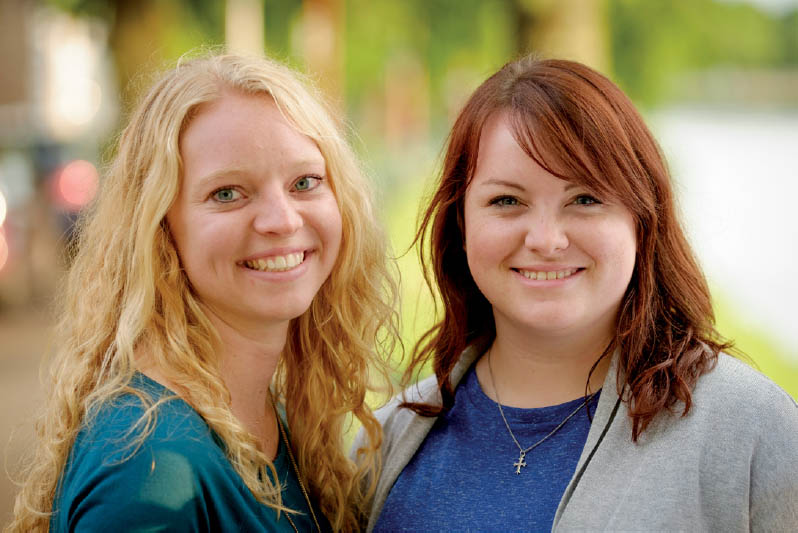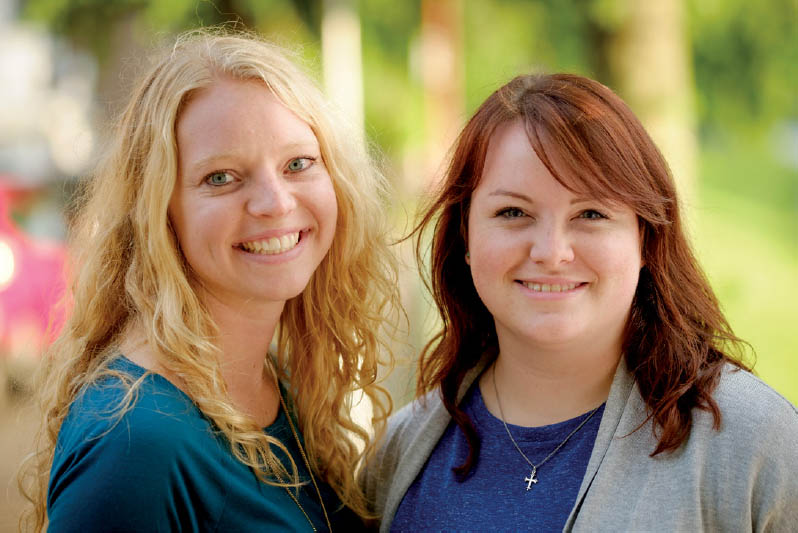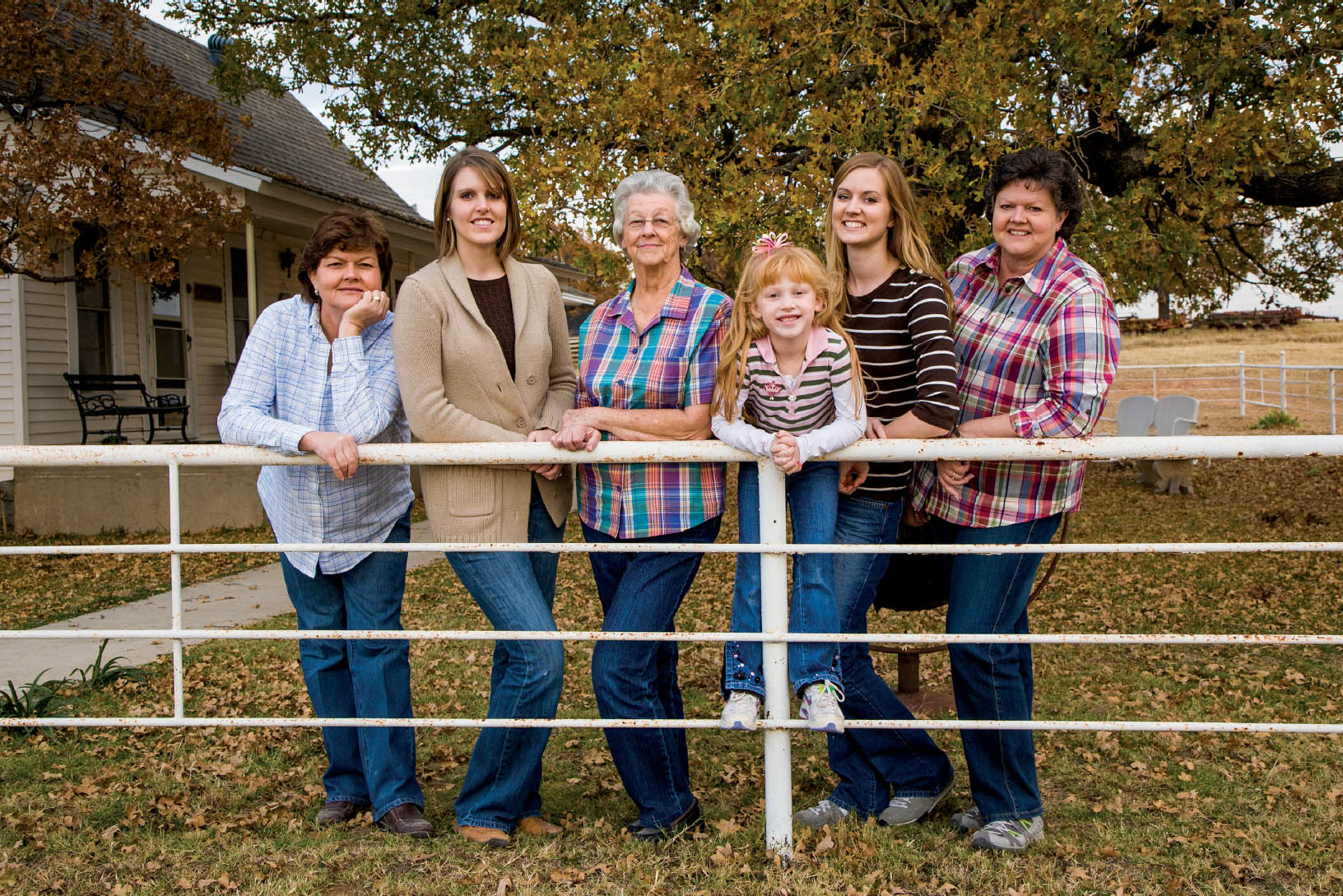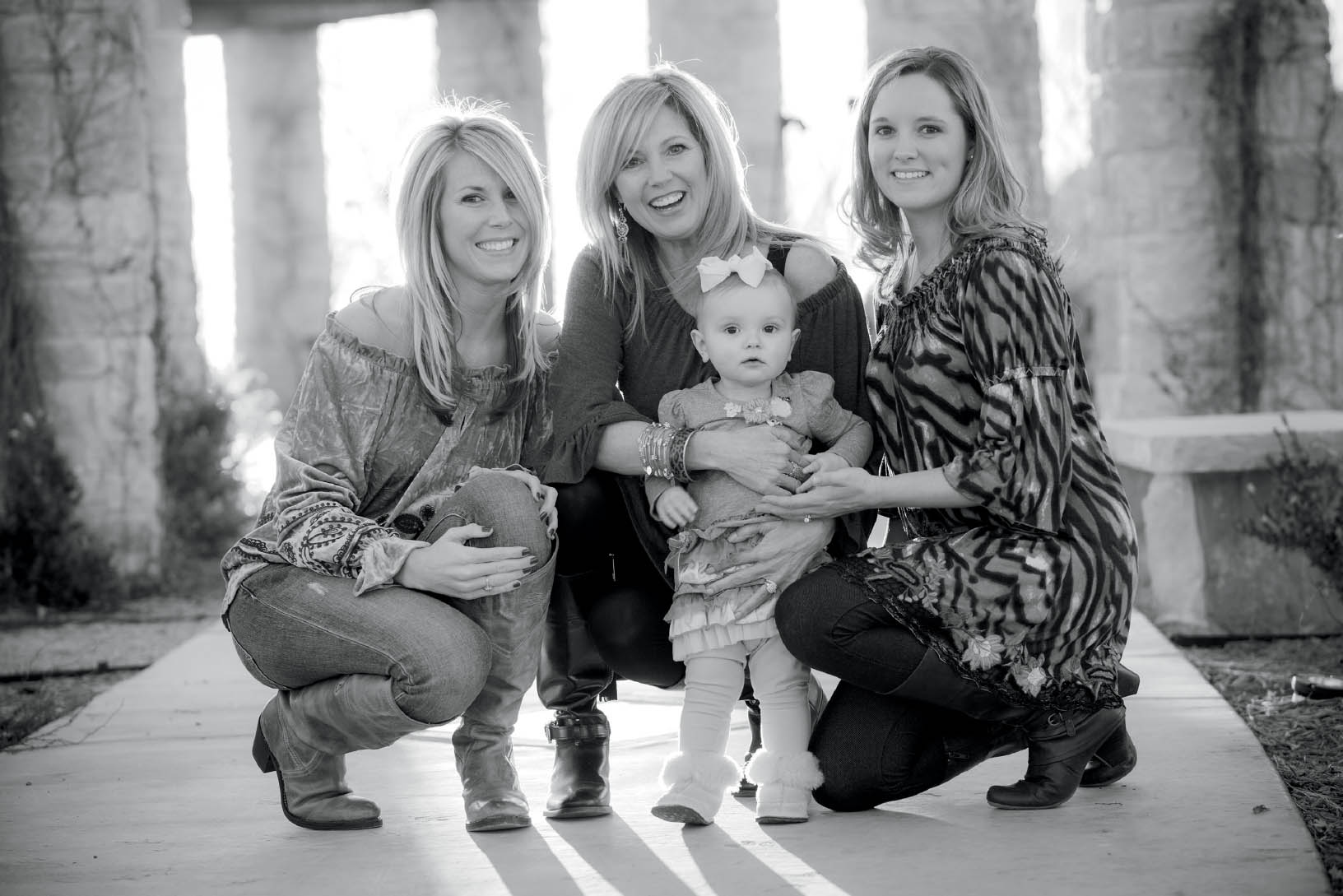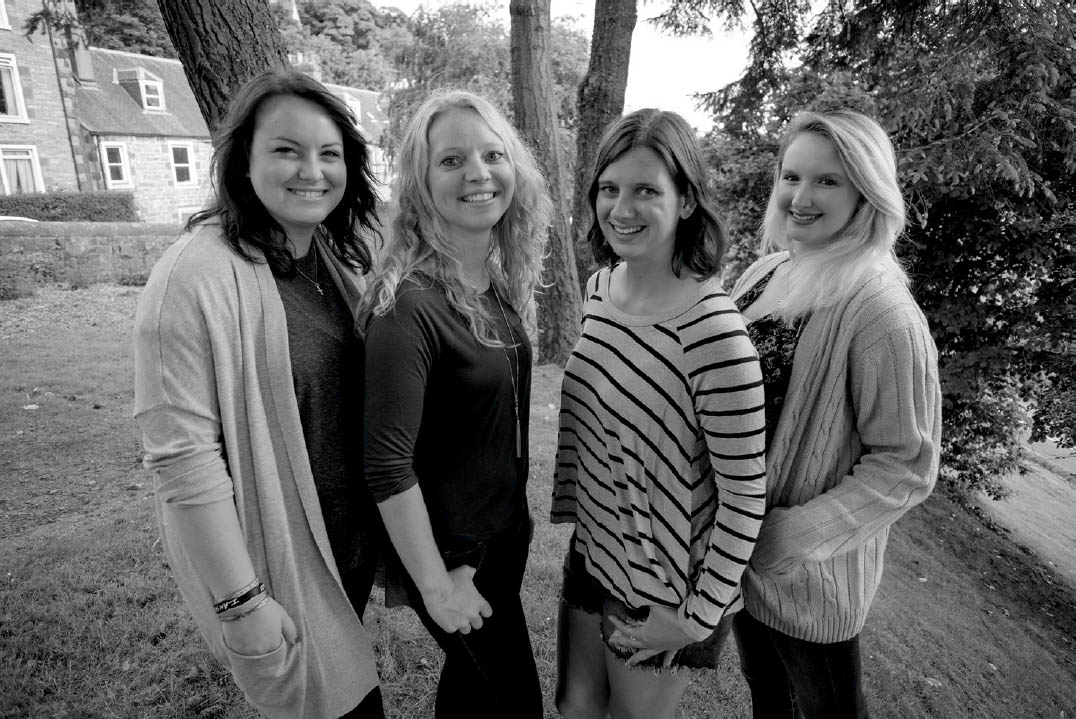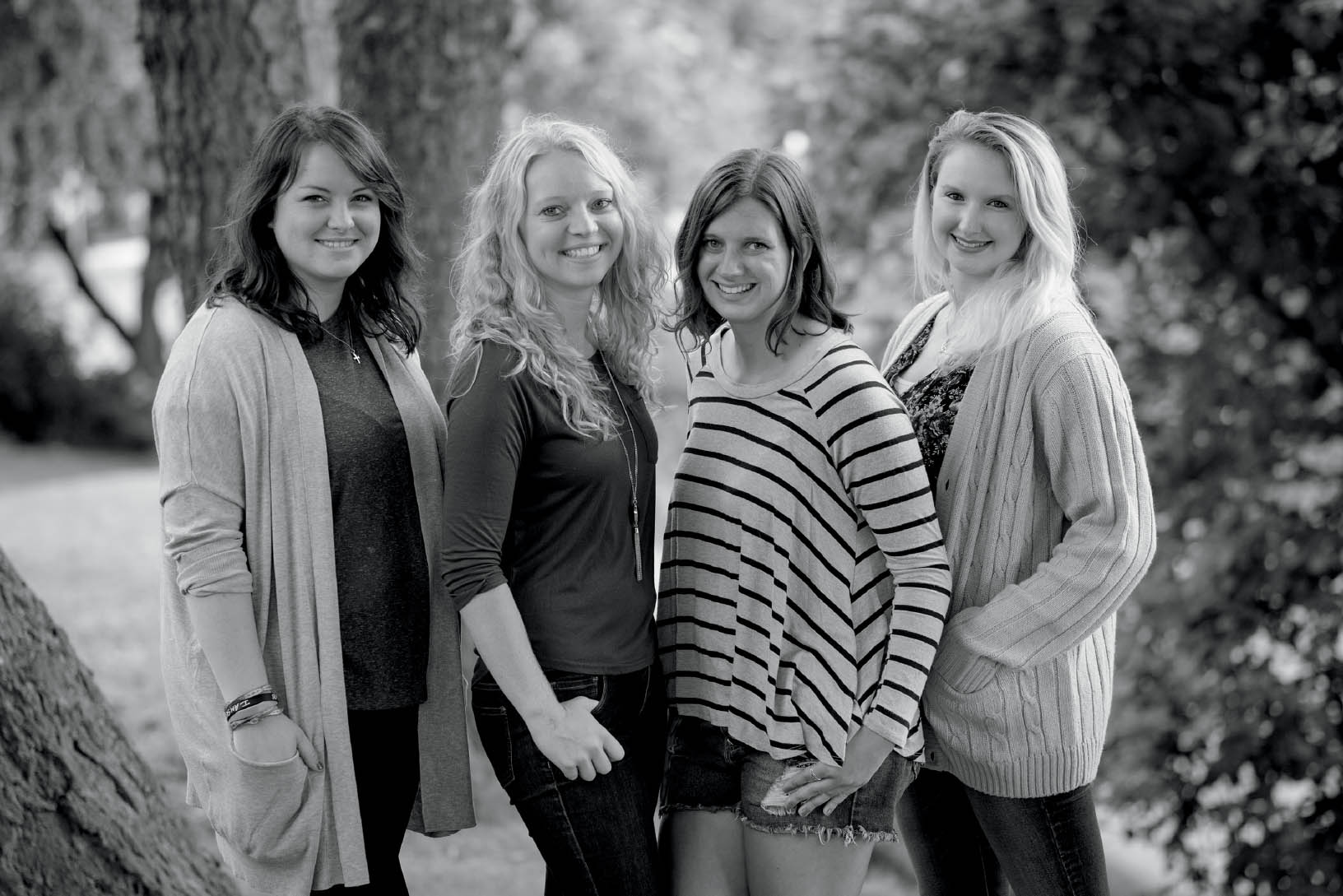45. WORKING WITH GROUPS II: THE ISSUE OF HEIGHT
![]()
ONE OF THE most frustrating situations for portrait photographers is posing groups. Technically, positioning them so they are all in focus is fairly easy and uncomplicated. However, when it comes to actually posing them, it confounds some photographers, myself included. There are very few rules that one must follow when posing groups, but one fairly important suggestion that helps pose a group and maintain compositional interest in the image is to avoid putting all of your subjects’ heads on the same level.
Creating a line across your frame of all of your subjects’ heads is almost tantamount to placing the horizon line in the middle of the frame. Visually, heads placed at the same level is rather flat (Figure 45.1). Instead, create a more dynamic image by visualizing your subjects on varying levels of height (Figure 45.2). Have one of your subjects sit in a chair while the other leans on the chair’s back, for example. If the hypothetical group here is a family of three, perhaps the child can sit on the ground at the foot of the chair. As long as the heads are not in line horizontally or vertically, this allows for a visual triangle to be created. This way, the viewing eye has an easier time moving and focusing on each individual family member, which is just as important as viewing them as one cohesive unit.
Even if you must pose all of the subjects standing, try to keep those members of the group who are relatively the same height from standing next to each other (Figure 45.3). Perhaps place the tallest person in the center of the group and create a sloping line of height to each side of him. Or, better yet, place them apart from each other if the space allows, which will make for easy eye navigation between each person in the frame.
45.1 Often, group shots in which all of your subjects are the same height offer composition with lower dynamic value.
ISO 400; 1/420 sec.; f/2; 90mm
45.2 I coached the camera-right subject to sit a bit lower on a sidewalk railing, not to make her look shorter than the other subject, but rather to add a compositional change-up and value to the simple portrait.
45.3 This portrait includes two pairs of subjects that are roughly the same height per pair. The subjects on the outside are posed at different levels, and the two tallest subjects are not placed next to each other. This is done so in an effort to avoid the eye getting stuck at one height while moving across the group.
ISO 320; 1/100 sec.; f/8; 35mm
While we’re on the topic of composition, I also suggest keeping your backgrounds as simple as possible (Figure 45.4). The less complicated or busy a background is for a group portrait, the easier it is for the viewer’s eye to move to each subject and still acknowledge them as a cohesive unit. Furthermore, it is also easier for you, the photographer, to pose the group without the distraction of a background you would otherwise have to work around. Out of focus backgrounds made up of a simple palette of colors or abstract structure works best, as does a more in-focus structure that can be used to frame the group (Figure 45.5).
45.4 Simple, often out-of-focus backgrounds, are key to maintaining visual focus on your portrait subjects, and this is probably more true when it comes to group portraits.
ISO 400; 1/600 sec.; f/2; 35mm
45.5 I placed the subjects in front of a repetitive, out-of-focus background. Although the background is overexposed, the structure helps mitigate the distraction the brighter parts create. Additionally, the direct light hitting the subjects in the back (which is also causing the overexposure), creates a great backlight on their hair and forms, further separating the subjects from the background.
ISO 200; 1/125 sec.; f/4; 105mm
Additionally, it is often easier to compose groups while using longer focal lengths. When you’re new to portraiture, you might think going wide when shooting more than two people in a group is necessary to get them all in the frame. However, a wider focal length only forces you to get closer to the group without simplifying the environment in a useful way (Figure 45.6 and Figure 45.7). You contend with subject distortion more than you need to, and you get so inundated with fixing the problem that you forget that simply backing up and using a longer lens is the real solution. Likewise, not all group portraits can be made with a 50mm+ focal length. However, when you can, try shooting with a focal length that compresses rather than expands, and you’ll be less concerned with technical matters and more able to focus on posing the group appropriately.
45.6 Although at first it seems appropriate, wider focal lengths distort groups just as much as they do individuals, and more structure surrounding them is brought into the frame.
ISO 400; 1/210 sec.; f/2.8; 14mm
45.7 Using a longer focal length is a great way to reduce distractive backgrounds with large groups. Although you need more distance from the subjects, the reduction in distortion and unnecessary elements in the frame is a big payoff.
ISO 400; 1/280 sec.; f/2; 90mm

